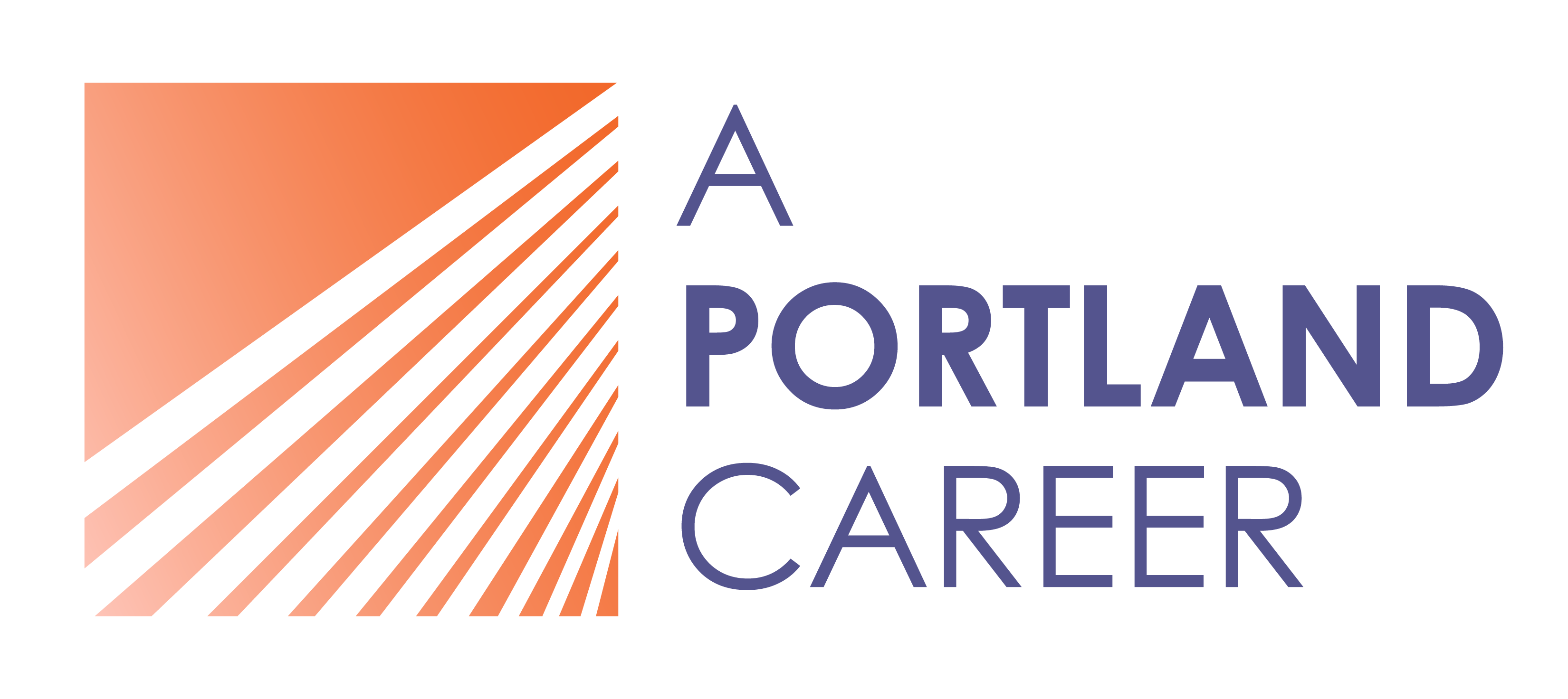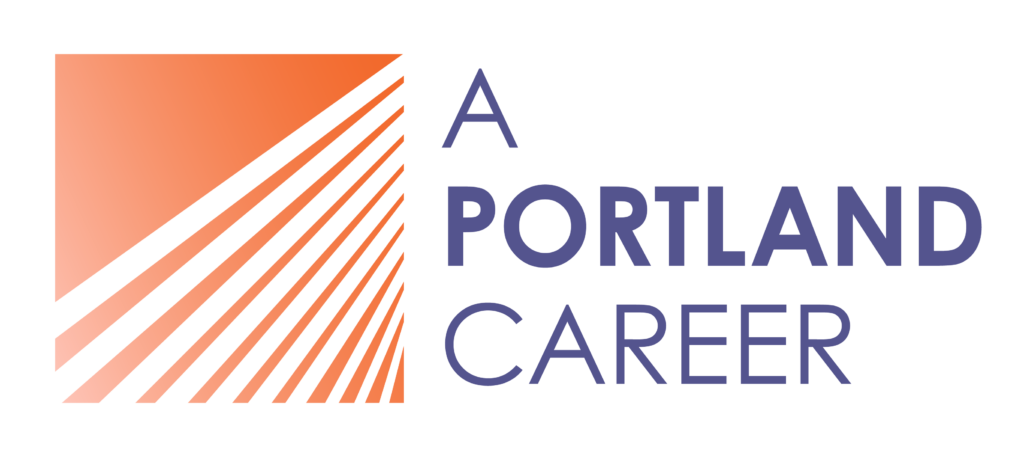You need to know how to identify and incorporate resume keywords to write a winning resume that will beat applicant tracking systems (ATS). Here’s how.
This guide to resume writing is packed with successful resume examples and the most up-to-date strategies to write a resume that’ll win you the job interview.
Our Complete Guide to Writing a Winning Resume
By A Portland Career, and edited by Dan Hahn, M.S., and Suzie Sherman
Lost in resume-land? We can help you write your best one
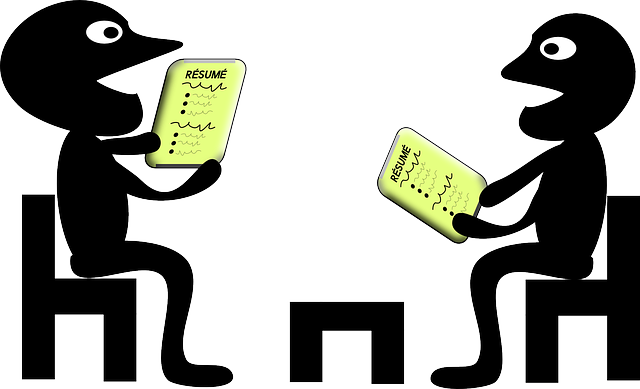
It’s time to sit down and write the best resume for the job. Here is a guide through resume examples from some of our successful clients, and a final resume writing checklist to accompany you in the process. When you’re done, you’ll have a great resume, packed with relevant skills and experience, and front-loaded with keywords to ensure it passes through an ATS scan. Your resume is your ticket to your next interview, and a new job.
In this article, we summarize our recommendations and show you good resume examples that have successfully put them into action. We also supply a FAQ on common questions, and a final checklist, so you can be sure that your resume contains all the elements it needs to land you that job interview.
Note: The samples are actual client resumes (with the names changed, naturally!) We either wrote them or coached our clients through the process, so they could write effective resumes themselves. In most cases, these clients landed an interview!
Home → Helpful Articles → Resumes & Cover Letters → Our Complete Guide to Writing a Winning Resume
This article is the fifth in our series on writing successful resumes and cover letters. Read ’em all:
- Plan Your Resume and Land the Job Interview
- Your ATS-Friendly Resume Must Have These 5 Components
- How to Identify Resume Keywords for Your Job Application
- Accomplishment Statements: A Powerful Way to Tell Your Career Story
- Our Complete Guide to Writing a Winning Resume (You are here!)
- How to Write a Kickass Cover Letter
Then, of course, you need to sit down and do some writing. Unless this is a big challenge for you, and you’re feeling stuck. In that case…
On This Page
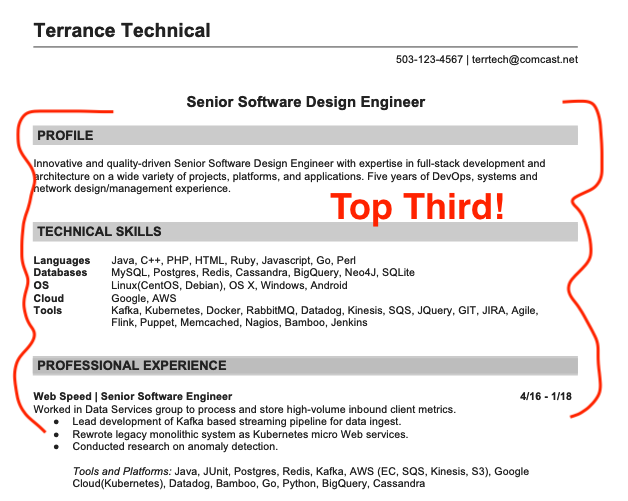
Wow the hiring managers in the top 1/3 of your resume
The top 1/3 of your resume conveys who you are and what you have to offer your potential employer. It includes your name, your contact information, relevant social media URLs (such as LinkedIn or Instagram for creative portfolios) the job title you seek, and a Professional Profile Summary or Keyword Bank that highlights your skills specific to the qualifications listed in the job description. Our samples include different styles for the top of the resume, all effective at conveying the applicant’s qualifications for the specific job.
What’s in a name? Notice that each sample resume further down this page includes the job title after the applicant’s contact information. The job title is a critically important keyword for ATS software scanning.
- After the job title, Sally Sample and Melvin Model each include a brief, one-sentence statement about who they are as a professional, a quick branding of what each of them offers as a candidate.
- Nancy Newhire and Estelle Example chose to forgo the branding one-liner and went right to a Keyword Bank, listing their skills that match the job description requirements.
- Instead of a Professional Profile, Summary, or a line of keywords, Corey Creative chose to include a Qualifications Summary as a bulleted list that shows how their experience matches job responsibilities presented in the job post.
- Some industries demand specific hard skills (as opposed to “soft skills,” like “communication” or “detail-oriented”). Terrance Technical works as a software engineer. His resume includes a Technical Skills section that lists the tools, applications, coding languages, and platforms that are in his wheelhouse and match the job qualifications.
- If you are writing a healthcare or legal resume, or you’re in another area of work that requires certifications, you should choose to have a Licensure or Certifications section in your resume. We detail sections of your resume in our article Plan Your Resume.

How to use keywords effectively
We’ve emphasized that most employers screen resumes by using an applicant tracking system (ATS) that searches for keywords and phrases included in the job announcement. Even if the employer, an actual human, screens resumes the old-fashioned way, they will review your resume quickly, by scanning for keywords. The take-home message: use keywords throughout your resume, like these clients did:
- Corey Creative includes keywords and phrases in the Skills section of their resume, as well as in their job description under Professional Experience.
- Nancy Newhire uses keywords to lead off her bulleted list of main qualifications under her Profile.
- Estelle Example grabs our attention with key phrases like “Customer Service Focused” and “Team Collaborator.” Note that Estelle uses additional keywords such as “Confidentiality,” and “Conflict Management” throught her resume.
- In addition to a Technical Skills section, Terrance Technical includes a Tools and Platforms list of technical keywords relevant to each job he held.
- All samples include keywords and phrases in the Experience section when describing major accomplishments.
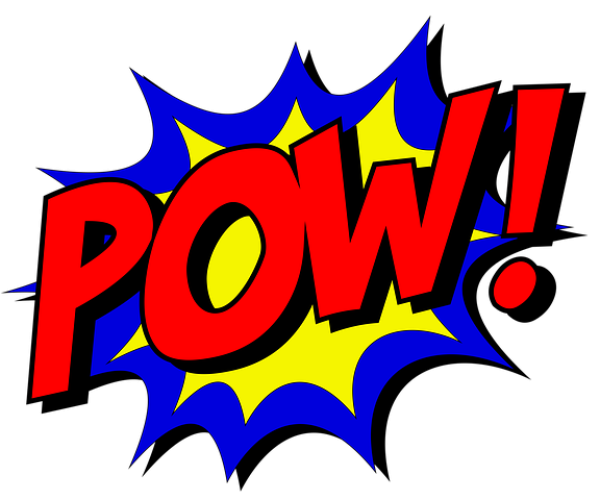
Write powerful accomplishment statements
Our resume samples show you some ways to work accomplishment statements into your resume. Instead of listing job duties, accomplishment statements demonstrate your effectiveness to your potential employer. Use active verbs to present a challenge, the action you took, and the result you achieved. List the accomplishments most relevant to your target job at the top of your resume, in your Professional Profile, or immediately after:
- Estelle Example lists her best accomplishments just after her Professional Profile.
- Sally Sample lists her accomplishments in a section called Relevant Achievements, including the name of the company or organization where she accomplished each.
Repeat specific achievements, in more detail, in the Professional Experience section under the corresponding job. The Experience or Work History section includes job titles, employers, dates, and accomplishments.
Accomplishment statements should include a quantitative or qualitative outcome. Some quantitative examples:
- Sally Sample:
- Increased student retention by 17% with the launch of campus-wide community events
- Boosted participation by 20% by improving communications between participants and staff
- Corey Creative:
- Saved labor and shipping costs 5–10% by creating an administrative system
- Reduced payment time 45% by creating a new streamlined process
Qualitative outcomes can be just as effective in highlighting your accomplishments:
- Nancy Newhire:
- Reduced meal costs by negotiating with vendors
- Improved student accountability by developing behavior expectations and communicating specific guidelines
- Melvin Model:
- Streamlined the enterprise reporting environment for Maple County by identifying solutions to eliminate multiple stand-alone systems
- Increased efficiency of the District Attorney Case Management System by leading a technical team to develop and implement a new automated system for case managers
- Terrance Technical:
- Streamlined and improved data access by creating several iterations of a Project Management Console used by research and technical staff
Accomplishment statements can also describe awards, accolades, promotions, and feedback:
- Nancy Newhire: Earned two patents for development of competitive products
- Estelle Example Was Employee of the Quarter for Outstanding Customer Service and Team Initiative
- Sally Sample: Was promoted to director of academic advising after one year
Jog your memory: To stimulate your thinking about the positive impact you had in your previous jobs, try digging up your performance reviews to see where you stood out, or get together with an appreciative colleague who can remind you!
Questions our clients ask about resume writing
No article on how to write a resume is complete without a little FAQ! Here are answers to some questions our clients have asked over the years, and how we resolved them in our resume samples:
Q: What if I’ve been a freelancer or have had several jobs working for a temp agency? How do I present my work experience?
A: While working at other jobs (mainly as a barista and doing food service work at a beloved local grocer) Corey Creative had a side gig as a freelance photographer, his dream job. If you are a freelancer, address it like you would any other job in your resume, but be sure to list your past clients, especially if there are some heavy hitters among them. Corey’s past clients include Airbnb and Condé Nast—don’t dare leave those out!
Q: What if I want to make a career change, or have gaps in my employment history?
Work with Joanie
Press play! Joanie Donnelly, our Resume and Cover Letter Expert, discusses what you can do if you have gaps in employment on your resume, or if you’re looking to make a career change. Click the button if you’d like to work directly with Joanie to create your best resume.
A: If you’re making a career change, or if you’re looking for an entry-level job for any reason, it’s best to use a combination resume. This type of resume takes the best aspects of a functional resume (focused on your skills and achievements) and combines them with the clarity and transparency of the reverse chronological resume (describing what you did for each employer and the timeline, showing years of experience). Remember to list any experience starting with the most recent, and work your way down the page.
If you’ve got a sales resume, showing your sales associate experience, for example, the skills can easily translate to a customer service resume, a retail manager, or a sales manager position. If you’re applying for a job in education, and you don’t have professional teaching experience, informal child care experience counts! The important thing is to demonstrate the adjacency of your prior work experience to the new position you’re seeking.
Estelle Example’s resume addresses this situation. Her target job is human resources assistant, yet she has been working outside of the field of human resources since 2005. Estelle has the perfect combination resume: one that both highlights relevant skills and qualifications and presents work experience in reverse chronological order:
- She highlights her combined experience in HR and administrative assistant work, much of which overlaps the requirements of her target job
- The bullets under her Professional Statement highlight her HR qualifications and experience, even though they occurred over 15 years ago
- She uses human-resources related keywords throughout her resume, even under job titles she’s held that are less immediately relevant.
Q: When would I want to use a functional resume?
A: A purely functional resume focuses exclusively on skills and job duties, while de-emphasizing work history and dates of employment. Functional resumes are fine for in-person networking or informational interviews, but we don’t recommend a straight functional resume to submit for a job application. Use a combination approach instead, featuring your experience and how it translates to your new desired work, and include a reverse chronological experience history and accomplishments.
Q: What if I’m going for a promotion? How do I best present myself?
A: Melvin Model’s and Sally Sample’s resumes best illustrate this scenario. You’ll notice in Melvin’s resume that, while he has several years of information technology experience, it is at the project and team management level. He is now applying for an assistant director position. Melvin uses a Relevant Experience section to apply the keywords in the job announcement to his experience, demonstrating that he meets the necessary qualifications for the job.
Sally Sample, who is applying for a director of education position, also has relevant experience, although her most recent job title was not at that level and her director-level experience is dated. Like Melvin, she includes a Relevant Achievements section to highlight her qualifications for the position.
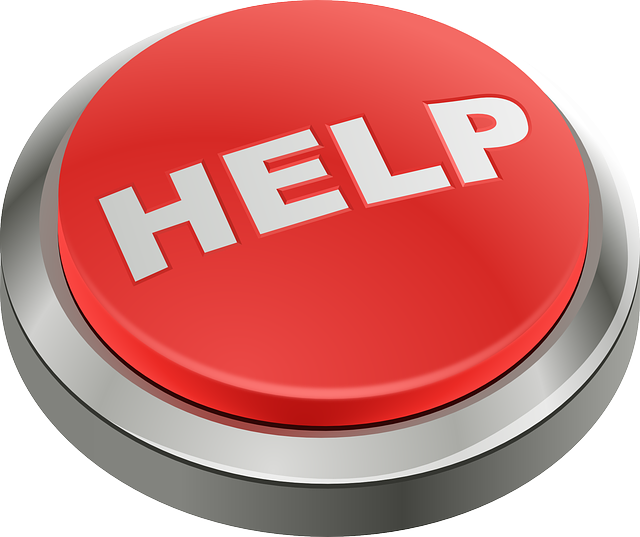
When To Seek Help
Below are the resume examples. If you’ve read this recap, as well as our other articles on resume writing, and you’re still feeling overwhelmed and unsure of how to write your own resume:
- Consider whether or not you are finding the right job postings. The jobs that intrigue you the most might not match your skills and qualifications, making it more difficult to put together an effective resume. If this seems to be the case for you, read our articles: Taking Your Skills Inventory and 7 Expert-Backed Tips to Help You Find the Right Career to make sure you’re targeting your search correctly.
- Get help from our professional resume writers. Knowing when to ask for help in your job search is an important skill to deploy. However, make sure that whomever you hire is up-to-date on current resume trends, and knows how to tailor resumes to specific jobs. Getting an attractive one-size-fits-all resume may be inexpensive and appealing to the eyes, but chances are, it won’t be a winning resume. Over the years we have helped our clients put together highly effective resumes that have landed them interviews. We’re happy to do the same for you!
Professional resume examples
These clients scored interviews with strong resumes that highlighted their work experience and accomplishments with keywords tailored to the job descriptions they applied for:
Estelle Example: human resources administrator resume
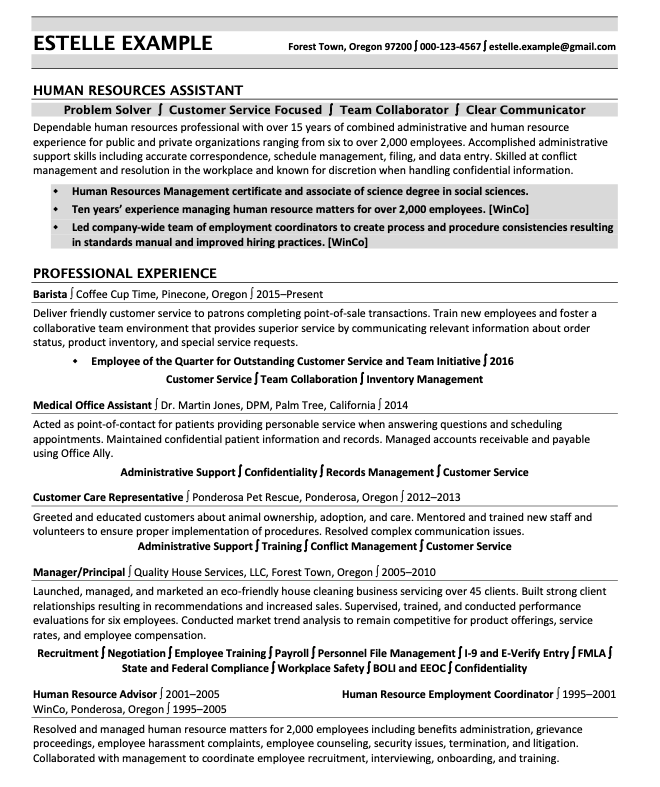
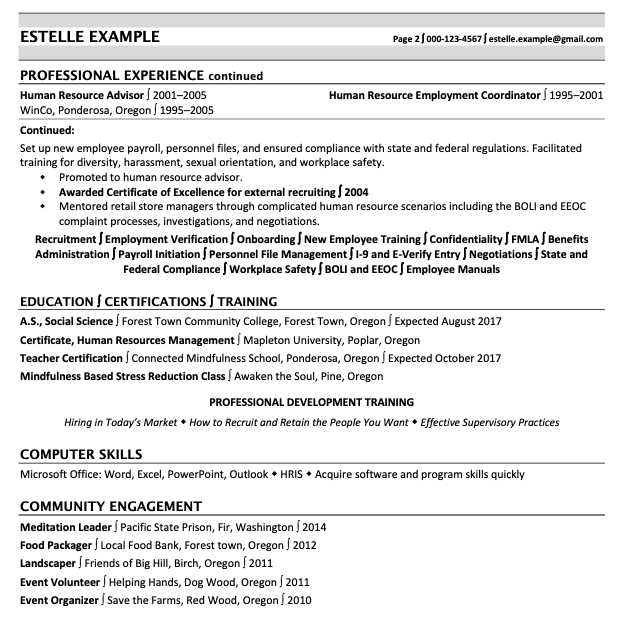
Sally Sample: education manager resume
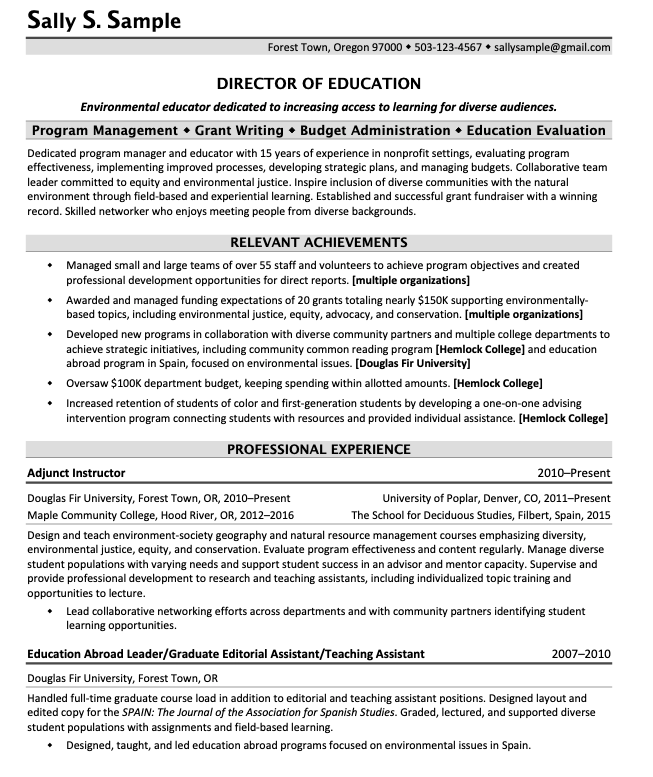
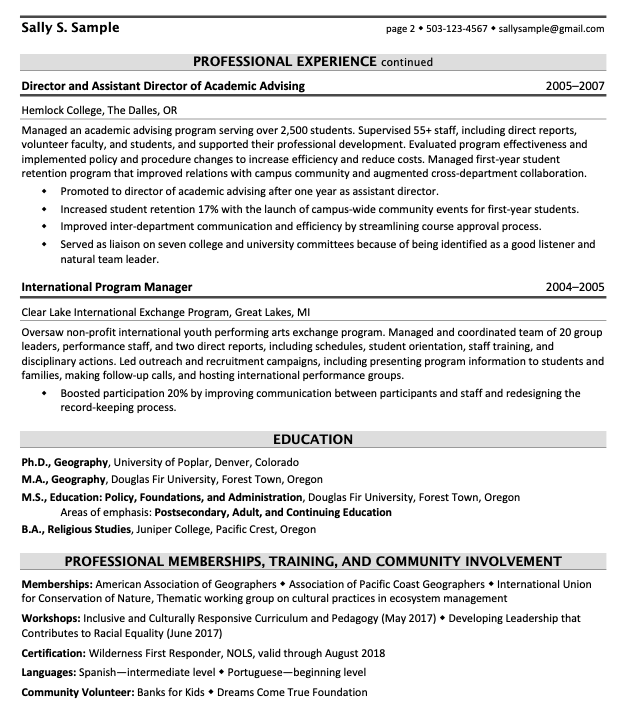
Melvin Model: information technology resume
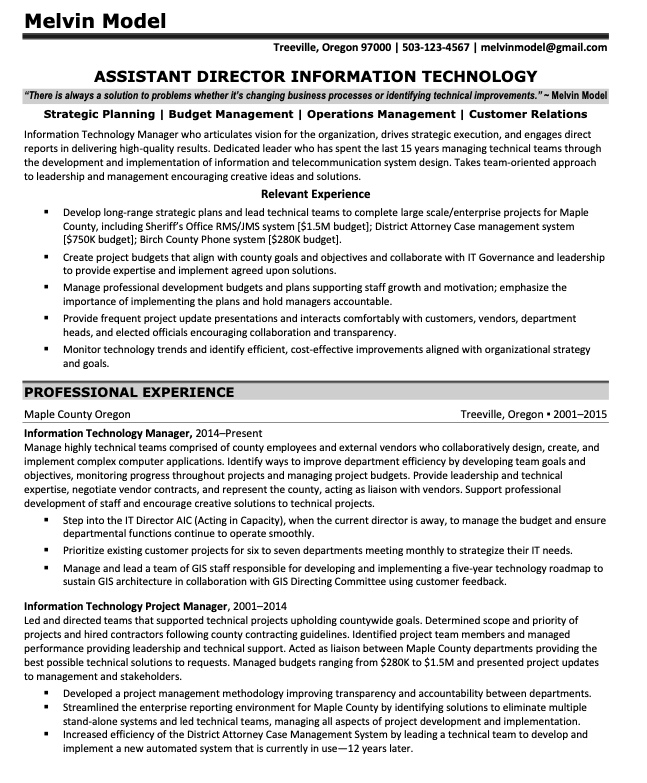
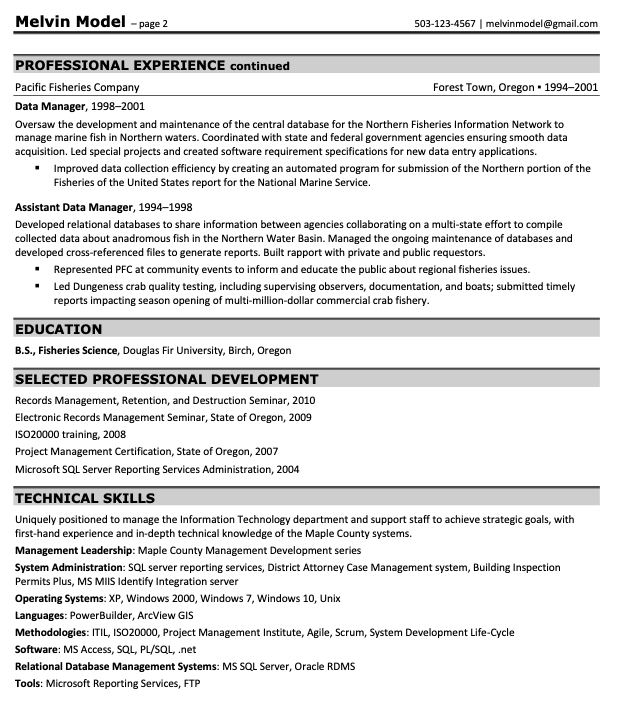
Nancy Newhire: engineering resume
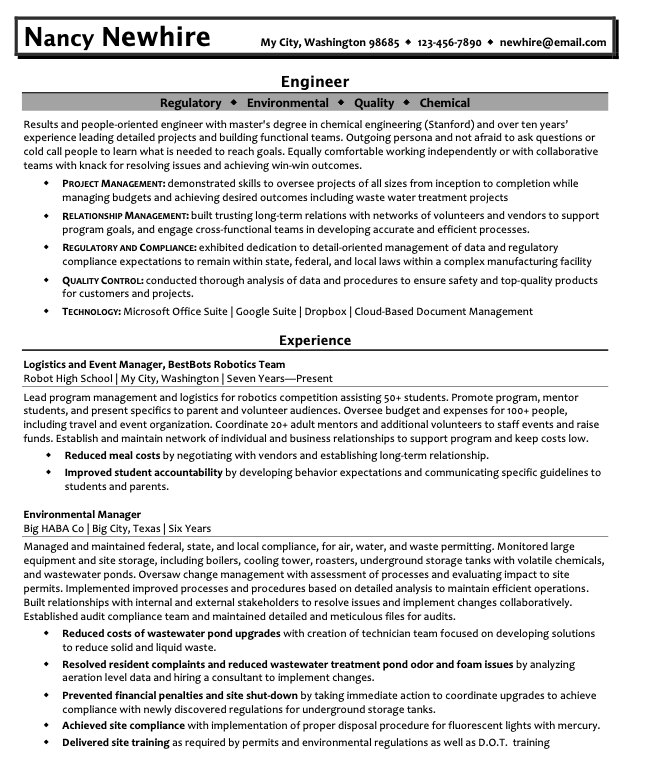
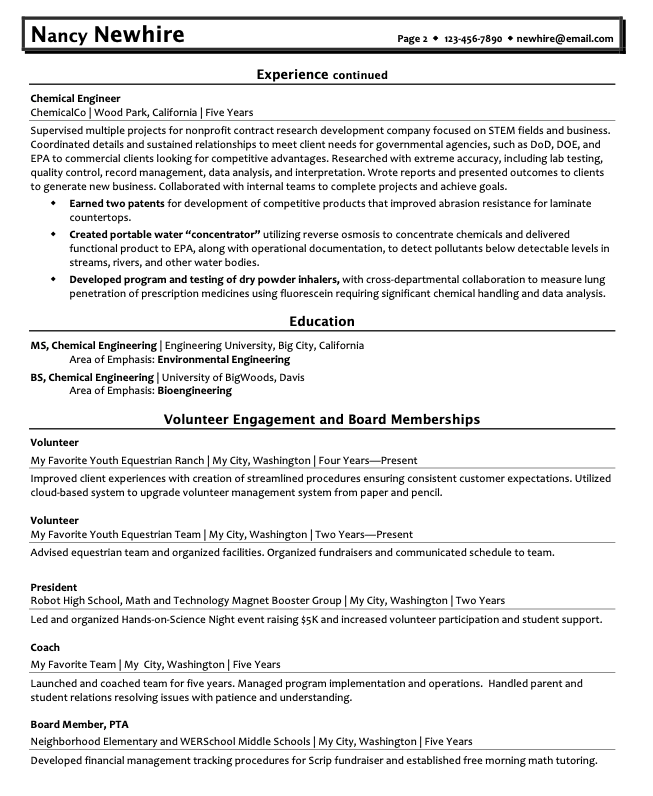
Corey Creative: photographer, graphic designer, and content manager resume
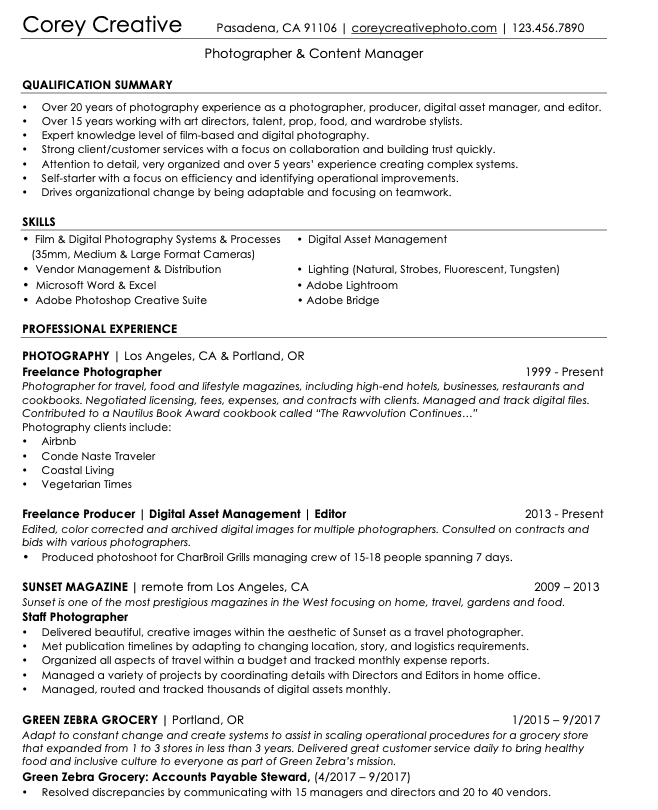
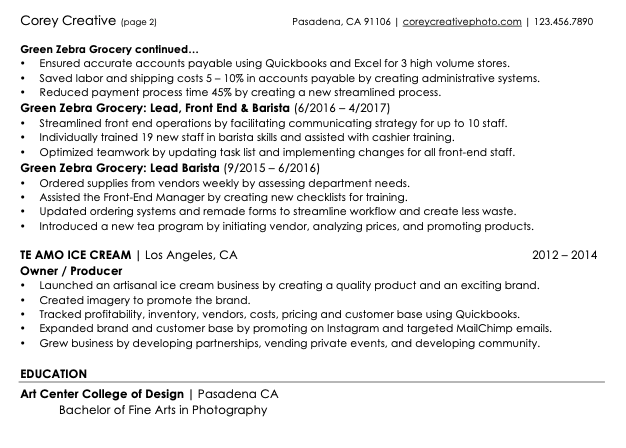
Terrance Technical: software developer resume
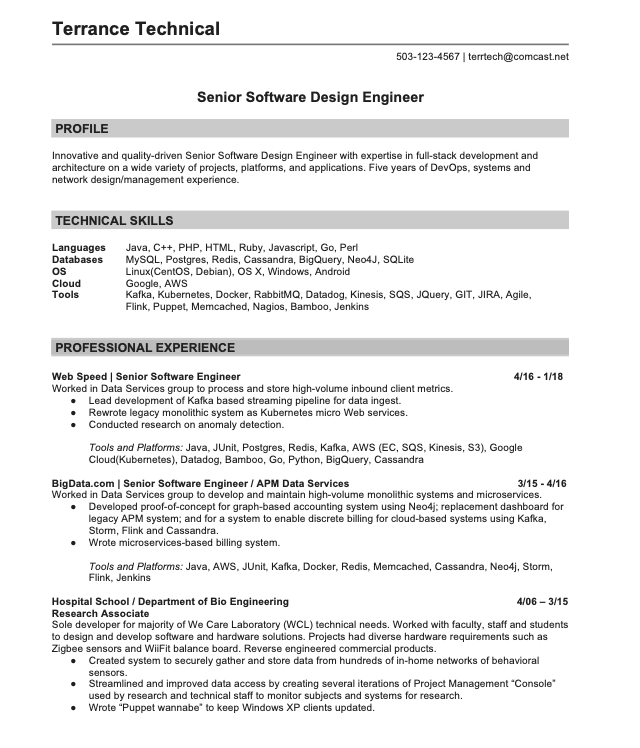
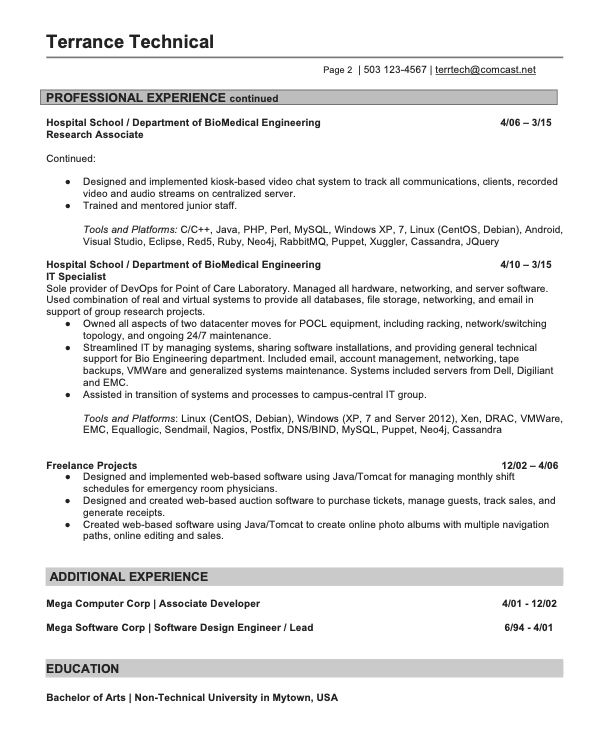
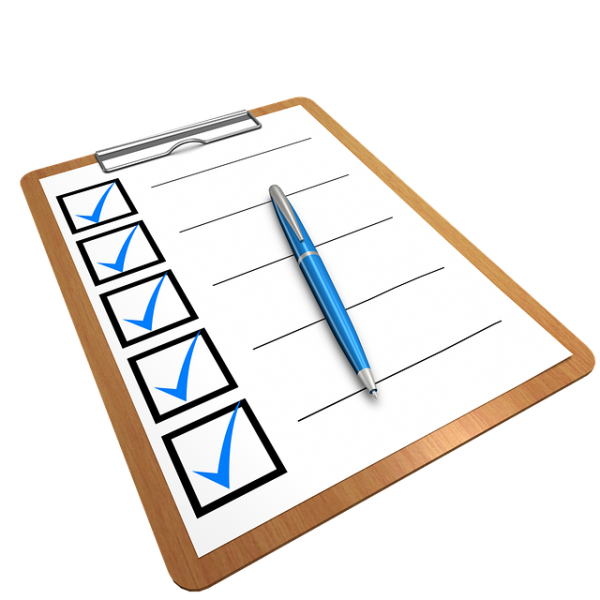
Resume Checklist
We’ve covered a whole lot of information about creating a resume, so let’s simplify it with a quick checklist. Review this list once you’ve written your resume, and keep it on hand for subsequent resume writing, since you’re going to customize your resume for each unique job application. Make sure to save each version of your resume separately, so that you have your own file of resume templates to cut and paste from—your own custom resume builder!
My resume:
❏ Includes a heading with my name, contact information, and the job title I am applying for.
❏ “Wows” the reader in the top 1/3 of the document, and focuses on how I can meet the needs for this employer.
❏ Communicates key strengths for the position in a Professional Profile, Summary of Qualifications, or Keyword Bank.
❏ Includes current work experience—typically the past ten years. Does not include anything over 15 years unless it is specifically related to the target position.
❏ Is packed with industry-specific language and keywords to ensure it is ATS-friendly and easily skimmed.
❏ Includes action-oriented accomplishment statements to show what I’ve done and how well I’ve done it.
❏ Contains impeccable grammar and spelling.
❏ Communicates my most relevant skills, and similar or transferable skills if I have less direct experience.
❏ Is available in the appropriate document formats: Word (.doc, .docx) or PDF.
❏ Is appealing to the eye, easy to read, and uses the most effective resume format: modern fonts, simple design, and plenty of white space, especially between sections.
❏ Minimizes any potential concerns such as gaps in employment or lack of directly relevant experience.
❏ Eliminates dates of education to avoid ageism.
❏ Has been spell and grammar checked in Word or Google docs, and proofread at least twice.
Final thoughts on writing your resume
When it’s time to sit down and write your resume, get to know the fundamentals that will make it successful and score you the job interview. Catch the eye of the hiring manager, pass the ATS scans, pack your resume with keywords, and write effective accomplishment statements. This guide to writing your resume, and all the articles in our resume writing series, are the go-to references you need to build winning resumes, customized to each specific job opening. Bookmark these articles to check out an example of a resume, learn the dos and don’ts of modern resume writing, and get all your resume writing questions answered! And then schedule an Exploratory Call with us if you need more help. We’ve got you!
Key takeaways
- Resumes must be customized for each unique job position you apply for.
- Resumes will be skimmed quickly by either a hiring manager or by automated applicant tracking systems, so the top ⅓ of your resume is critically important for catching your reader’s eye and front-loading with keywords.
- Keywords from the job posting and the company’s website and industry must be used throughout your resume. The job title itself is an important keyword or phrase.
- Pack your resume with active accomplishment statements, not just a list of job duties.
- Reach out for professional help from us to create your best resume and land the job interview.
Related articles you might be interested in:
George Santos’s Resume: Don’t Try This at Home
Representative George Santos teaches us how NOT to write a resume. First lesson: don’t lie through your teeth!
Your ATS-Friendly Resume Must Have These 5 Components
Use these 5 ATS-friendly resume tips to beat applicant tracking systems! Don’t miss out on your dream job on a technicality!
Plan Your Resume and Land the Job
Plan your resume to showcase your most relevant skills and experience right up front to catch the eye of recruiters and ATS software.
